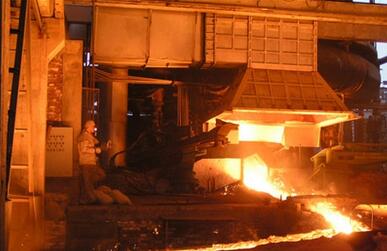Product Search
Quickly find the product you need
Products List
Refractory Knowledge
- Production Process Methods of Refractory
- Aggregates Used For the Production of Ins
- Manufacturing process of fire clay insula
- the development of the refractory brick i
- Pollution and treatment in the production
- Pros and cons of lightweight mullite bric
- Refractory material production process
- Thermal Shock Resistant Fireproof Heat In
- Classification of mullite insulation bric
- The Use of Mullite Insulation Bricks
Products List
- Phone:0086-370-63838939
- Email:sales@sunriserefr.com
- Office Address: No.36 Fengchan Road Of Zhengzhou, Henan, China (Mainland)
How to prevent and slow the erosion of refractory materials used in glass kiln
Date:2018-07-10 15:58 | From:Zhengzhou Sunrise Refractory | Author:admin
In the glass kiln, the powder, glass liquid and flame gas will corrode the refractory material at high temperature, so that the refractory material of the glass kiln is dissolved, peeled off, thinned, deteriorated, recrystallized, etc., which is called refractory corrosion. .
The erosion effect of the refractory material for the glass kiln is represented by a complex phase reaction between the glass liquid and the refractory interface, and the glass liquid first dissolves the free SiO2 in the refractory material. The dissolution rate of mullite is small, and it accumulates at the interface between the glass liquid and the refractory material. Although the small crystal mullite is dissolved, the large crystal mullite even grows when used. After the refractory material is eroded, the composition in contact with it adds SiO2 and Al2O3 components. The melt will diffuse into the rest of the glass. During the diffusion process, the composition of the melt changes, SiO2 and alkali matter increase, and the aggregation of β-Al2O3, nepheline and feldspar crystals occurs in the interface, and the contact between the refractory and the molten glass is also achieved. On the surface, first the mullite layer, followed by the nepheline or feldspar crystal layer, followed by the unetched refractory. After the refractory material is dissolved, the viscosity of the glass liquid is increased, and the surface of the refractory material is formed to form a protective layer which is difficult to move, which reduces the effect of continuing erosion. This balance is destroyed and the erosion between the glass and the refractory material occurs again.
The soda ash, the mirabilite, the borate, the fluoride and the oxide in the batch react with the surface of the refractory material at a high temperature to form a eutectic or a loose substance, and continue to proceed by the alternating reaction of the void or the interface of the refractory material itself. The interior of the brick body penetrates and diffuses, causing corrosion of the refractory material. The corrosion mechanism of the above various salts and compounds is different, and the Glauber's salt has much stronger corrosion effect on the refractory than the soda ash.
The erosion effect of the batch powder on the material is mainly manifested in the erosion of the refractory by the alkaline vapor evaporated by the high temperature of the powder, such as the erosion of the surface of the silica brick, the internal "rat hole", etc., and the glow generated in the lattice brick. Petrochemical effects, etc. Furthermore, the ultrafine powder in the powder accumulates in the lattice of the regenerator to form a tumor, which blocks the lattice hole. When it is serious, the lattice brick collapses and is damaged, and is forced to be repaired. Corrosion increases with increasing temperature, and a 50-60 °C increase in melting temperature shortens the lifespan by approximately one year. The front face wall, the feeding port, the front space of the melting section, the pool wall, the small furnace, the upper lattice of the regenerator, and the like are all affected by the erosion of the powder.
Combustion products of gas and heavy oil (containing corrosive gases such as SO2 and V2O5) and volatiles of individual batch components may also corrode refractory materials in flame spaces, furnaces, regenerators, and the like. Different refractories of glass kiln will react with each other at high temperatures, resulting in damage. For example, between 1600 and 1650 °C, clay bricks and silica bricks will react seriously. High alumina bricks and silica bricks will react moderately. Electrofused zirconium corundum bricks and silica bricks will react violently and be eutectic. The fused zirconium corundum brick reacts moderately with quartz brick and white foam, so a transition material should be provided between the fused zirconium corundum brick and the silicon brick.
The lattice brick used in the regenerator is also damaged by the action of redox atmosphere. The damage mechanism is mainly due to the different valence states of the valence ions caused by the oxidation and reduction states, the coordination state is different, and the volume of the reactant phase changes, resulting in the decrease of brick strength. And damaged.


